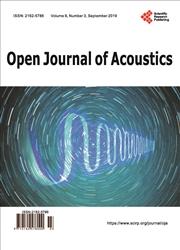Feelings Which Strike a Chord, and Chords Which Strike a Feeling
引用次数: 0
Abstract
The first part of this article addresses the main premise of the Theory of Musical Equilibration. It states that in contrast to previous hypotheses, music does not directly describe emotions: instead; it evokes processes of the will which the listener identifies with. It is not until these processes are experienced that music appears to take on an emotional character. The second part of the article focuses on demonstrating the emotional nature of musical harmonies. The Basic Test and the Rocky Test are presented. These tests were designed to find correlations between chords and scenes from fairy tales as well as emotional terms. 86% of the participants correlated the musical selection to the emotion outlined by the Theory of Musical Equilibration the authors developed in this context.触动心弦的感情和触动感情的和弦
本文的第一部分论述了音乐均衡理论的主要前提。它指出,与之前的假设相反,音乐并没有直接描述情绪:相反;它唤起了听者认同的意志过程。直到经历了这些过程,音乐才呈现出情感特征。文章的第二部分着重论证了音乐和声的情感本质。介绍了基本试验和岩石试验。这些测试旨在发现童话故事中的和弦和场景以及情感术语之间的相关性。86%的参与者将音乐选择与作者在这一背景下发展的音乐平衡理论所概述的情感联系起来。
本文章由计算机程序翻译,如有差异,请以英文原文为准。
求助全文
约1分钟内获得全文
求助全文

 求助内容:
求助内容: 应助结果提醒方式:
应助结果提醒方式:


